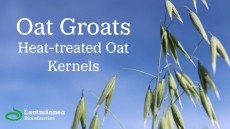Texture dictionary needed for new sensations
National Starch, to help manufacturers understand the needs of
consumers and increase speed to market of their products.
National Starch recently opened its new Texture Center of Excellence, in Bridgewater, New Jersey. Joseph Light, senior director of customer solutions and product innovation group, said that developing a set of texture definitions will be one of the aims of this center. This would help translate descriptions such as "crispy" and "crunchy" and "creaminess" into clear technical sensory language. The idea is to ensure that customers and technical specialists each understand what the other is talking about. Light told FoodNavigator-USA.com: "There is not really an industry standard when it comes to texture from a sensory perspective. "We are trying to create a much more thorough lexicon.. "In defining the creaminess of a food product, such as creamy dairy snacks or desserts, we would use texture lexicon such as viscosity, evenness of melt, evenness of mouth-coating, smoothness, and rate of melt-away to characterize differences in products and guide product development. "Providing the texture language or Texicon (tm) is very useful to help us work more effectively with our customers (food manufacturers) in trying to meet a specific consumer texture need. It allows for better communication of supplier to customer to consumer. "Texture is not nearly as well understood as say flavor." According to Mintel's Global New Products Database (GNPD), 12 percent of new products launched in 2006 featured texture claims on the front panel, a 50 percent increase from 2003. The Center of Excellence will host meetings with National Starch clients from across the globe, not just the US. It aims to meet the growing industry need for texture understanding and control and help accelerate innovation and new product development. It includes a focus group room, testing booths and culinologists who will help introduce market place trends, such as fine dining, to the final product. Light said that consumers want enhanced food quality and more textural sensations. There is also a market trend towards healthy eating, with the transition to more fiber fortified foods and the addition of nutrients. National Starch products such as Hi-maize (used for breads, cookies and cakes) and NUTRIOS, for more liquid products such as sauce, add resistant starch and fiber to a food product, apparently without impacting the texture in a negative way. However, Light added: "Many of our customers are looking for us to reduce cost in their over all supply chain and their formulation, replacing expensive ingredients and reducing cost. "This is going to be a driver for us, at least in the near future, because of what has been seen with raw material prices."













